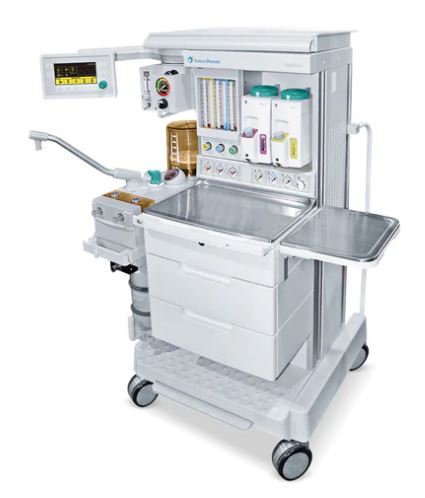
A closer look at important anesthesia machine Parts USA-SUPPLY.COM
GE Datex Ohmeda Aestiva 5 7900 Anesthesia Machine With All Accessories
The Components of an Anesthesia Machine
Anesthesia is a term that we are all familiar with. It is a general term that is applied to painkillers and being put under for surgery. It is quite a medical breakthrough that helps not only patients but also doctors. Anesthesia means an insensitivity to pain, especially artificially induced by the administration of gases or the injection of drugs into the body. It enables patients to tolerate surgery without pain. Prior to the discovery of painkillers, people would have to endure the pain of surgery that could range from minor to excruciating. Anesthesia allows doctors and surgeons to do their work without the distraction of a patient screaming in agony or moving and trying to get away from the pain.
The History of Anesthesia
Without anesthesia, modern medicine would not be possible. The ability to sedate patients and operate on them pain-free is invaluable. Ancient civilizations used some form of anesthesia throughout recorded history. The ancient Greeks, Chinese, and Incans all had their own forms of painkillers. It wasn’t until the 1200s that anesthesia made an appearance in Europe, when an Italian physician and bishop used sponges soaked in opium and mandragora to ease pain. Until the mid-19th century, surgeons had nothing to offer patients for pain except opium, alcohol, or something to bite on. American doctors during the Civil War tried to come up with something to ease the suffering of soldiers on the battlefield. They would have to bear the pain of having limbs amputated with nothing more than a stick in their mouths to bite on.
In 1846, Boston dentist William Morton used sulfuric ether to anesthetize a man who needed surgery to remove a tumor from his neck. The ether worked, the man and Morton were over the moon with excitement, and Morton called his new painkiller “Letheon.” He bought a large quantity of ether from a local chemist and started experimenting on himself and pets to discover the effects of use. Soon after, hordes of people with painful teeth came to him for treatment. Today, ether is no longer used, but someone had to be first. Experimentation with different chemicals, remedies, and gases continued through the decades, and better solutions developed into what we have today.
Development of Anesthesia Machines
The continuous flow machine is the most popular style in use today. It works in a simple closed loop delivery system that delivers the gases to the patient and removes any excess. Oxygen will flow from the source through the flowmeter. The flowmeter maintains a consistent flow of oxygen on its way to the vaporizer, where it is mixed with the anesthetic agents and converted into gas form on its way to the breathing circuit. Once there it travels into the patient’s lungs and sedates them. Any excess gas is eliminated by the scavenging system so that it doesn’t oversedate the patient and harm them. Eliminating the excess gases is necessary for the well-being of the medical team operating on the patient. They wouldn’t notice the room filling with the anesthetic until it was too late, and they passed out on the floor.
Components of an Anesthesia Machine
From those early experiments and delivery methods came the modern anesthesia machine. The purpose of the machine is to mix the anesthetizing agents with other gases and air and deliver it to the patient and keep them under during surgery. The design of the machine has not changed much since it’s invention in the early 20th century. An anesthesia machine is a highly sophisticated piece of medical equipment that has transformed over the years into what we see today. It has hundreds of different parts, moving and otherwise, that make it run. This list comprises just a few of the more important features of a complicated machine that engineers have improved for decades.
- Oxygen source—Patients will need help breathing while under and oxygen is important. Depending on the location of the surgery, there might be pressurized air tanks or pressurized air lines running in the room.
- Oxygen flowmeter—The flowmeter keeps the flow of oxygen at a set point. Consistency of the air flow is important, so most machines have electronic proportional control valves that keep everything consistent.
- Vaporizer—The vaporizer takes the liquid form of the anesthetic and transforms it into a vapor, so the patient can inhale it.
- Patient breathing circuit—This is how the anesthetic is delivered to the patient, usually a combination of a hose and face mask that fits over the patient’s nose and mouth.
- Scavenging system—This removes any excess gases from the machine and prevents it from contaminating the immediate atmosphere. Gases escaping into the room can have consequences on the other people in the room.
- Heads-up display—A monitor on the machine allows doctors and technicians to track the flow of the gases and make sure the flow is consistent. Any fluctuations in the flow will appear on the screen and alert the technician.
Need More Information?
USA-SUPPLY.COM is the perfect source for medical devices and medical supplies. We encourage you to check out our shop today https://usa-supply.com/collections/healthcare-lab-dental
Joe Rogers
joe.rogers@usa-groups.com
